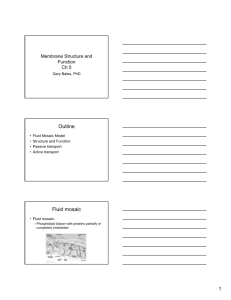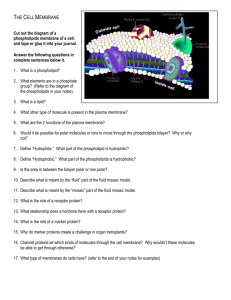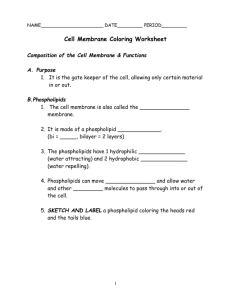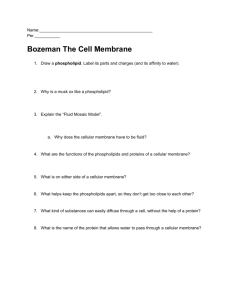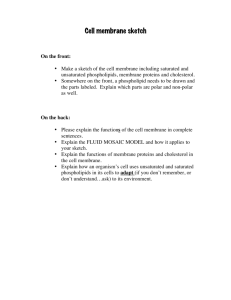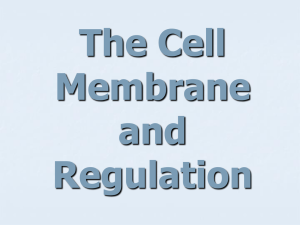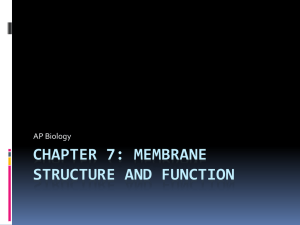Cells part 5 outline
advertisement
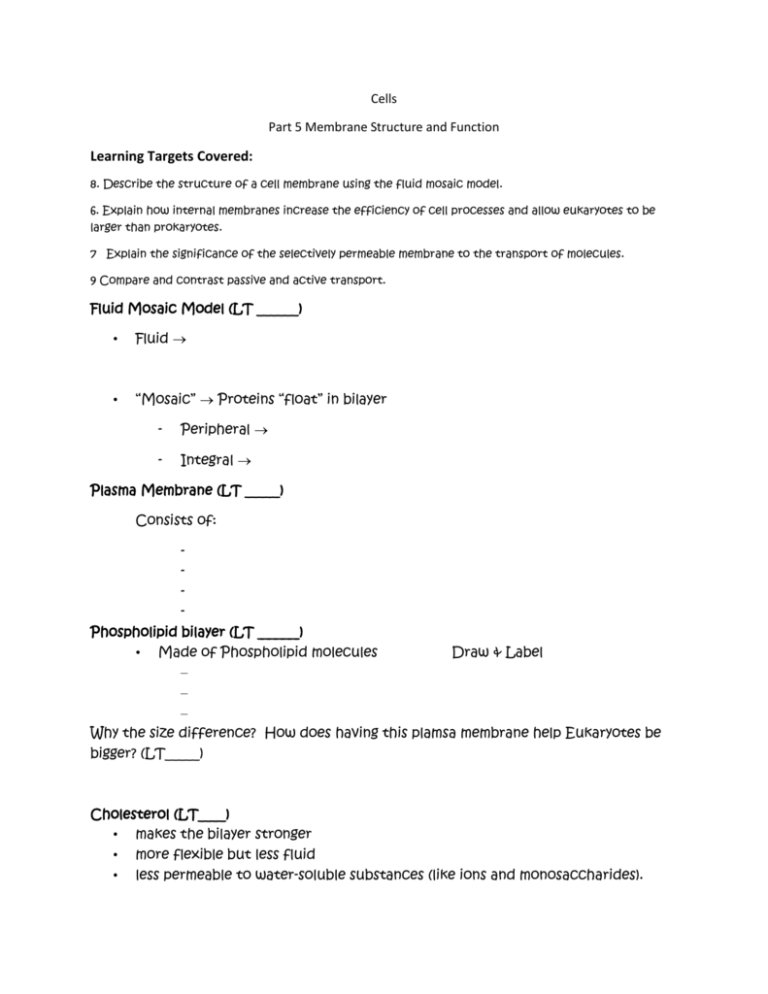
Cells Part 5 Membrane Structure and Function Learning Targets Covered: 8. Describe the structure of a cell membrane using the fluid mosaic model. 6. Explain how internal membranes increase the efficiency of cell processes and allow eukaryotes to be larger than prokaryotes. 7 Explain the significance of the selectively permeable membrane to the transport of molecules. 9 Compare and contrast passive and active transport. Fluid Mosaic Model (LT ______) • Fluid • “Mosaic” Proteins “float” in bilayer - Peripheral - Integral Plasma Membrane (LT _____) Consists of: Phospholipid bilayer (LT ______) • Made of Phospholipid molecules Draw & Label – – – Why the size difference? How does having this plamsa membrane help Eukaryotes be bigger? (LT_____) Cholesterol (LT____) • makes the bilayer stronger • more flexible but less fluid • less permeable to water-soluble substances (like ions and monosaccharides). Draw the membrane in the space below. Use colors, if possible, to distinguish between phospholipids, carbs, proteins, cytoskeleton, cholesterol, etc. Make sure to include the following: Phospholipid molecule, hydrophobic tail, hydrophilic head, Glycoprotein, Glycolipid, Integral protein, Peripheral protein, and cholesterol. (LT___) Carbs (LT____) • Covalently bonded to – proteins (glycoprotein) or • – lipids (glycolipids) • Proteins (LT____) • Cell identification • • Receptors that Selective Permeability (LT _____) • Some substances can get through, some – Glucose & other ions, molecules have to use Passive & Active (LT____) Passive Active Quiz Yourself Label each letter of the plasma membrane. (LT 8) What is a benefit of having membrane bound organelles? What makes a membrane impermeable to water soluble molecules? Why? Explain the fluid Mosaic Model and how phospholipids move. What is the difference between active and passive transport?
